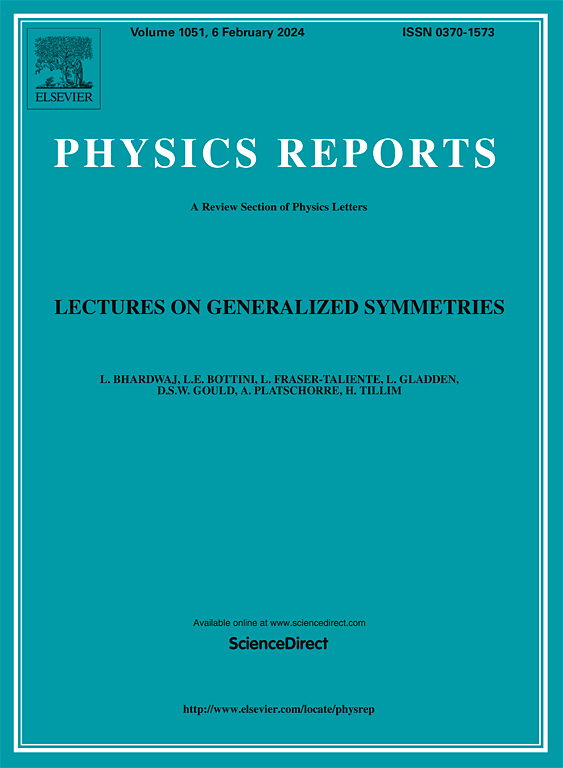Climbing to the Top of the ATLAS 13 TeV data
IF 29.5
1区 物理与天体物理
Q1 PHYSICS, MULTIDISCIPLINARY
引用次数: 0
Abstract
The large amount of data recorded with the ATLAS detector at the Large Hadron Collider, corresponding to 140 fb−1 of collisions at a centre-of-mass energy of , has brought our knowledge of the top quark to a higher level. The measurement of the top–antitop quark pair-production cross-section has reached a precision of 1.8% and the cross-section was measured differentially up to several TeV in multiple observables including the top-quark transverse momentum and top-quark-pair invariant mass. Single-top-quark production was studied in all production modes. Rare production processes where the top quark is associated with a vector boson, and four-top-quark production, have become accessible and cross-section measurements for several of these processes have reached uncertainties of around 10% or smaller. Innovative measurements of the top-quark mass and properties have also emerged, including the observation of quantum entanglement in the top-quark sector and tests of lepton-flavour universality using top-quark decays. Searches for flavour-changing neutral currents in the top-quark sector have been significantly improved, reaching branching-ratio exclusion limits ranging from to . Many of these analyses have been used to set limits on Wilson coefficients within the effective field theory framework.
爬到ATLAS 13 TeV数据的顶部
大型强子对撞机上的ATLAS探测器记录的大量数据,对应于质量中心能量为s=13TeV的140 fb−1的pp碰撞,将我们对顶夸克的认识提升到了一个更高的水平。顶反顶夸克对产生截面的测量精度达到1.8%,并且在包括顶夸克横向动量和顶夸克对不变质量在内的多个可观测值中,测量截面的差值高达几个TeV。研究了所有生产模式下的单顶夸克生产。顶夸克与矢量玻色子相关联的罕见生产过程,以及四顶夸克的生产,已经变得可以实现,其中一些过程的横截面测量已经达到10%左右或更小的不确定性。对顶夸克质量和性质的创新测量也出现了,包括观测顶夸克区域中的量子纠缠,以及利用顶夸克衰变测试轻子味普适性。在顶夸克扇区中对改变味道的中性电流的搜索已经得到了显著的改进,达到了分支比排除极限,范围从10−3到10−5。这些分析中有许多被用来在有效场论框架内设定威尔逊系数的极限。
本文章由计算机程序翻译,如有差异,请以英文原文为准。
求助全文
约1分钟内获得全文
求助全文
来源期刊

Physics Reports
物理-物理:综合
CiteScore
56.10
自引率
0.70%
发文量
102
审稿时长
9.1 weeks
期刊介绍:
Physics Reports keeps the active physicist up-to-date on developments in a wide range of topics by publishing timely reviews which are more extensive than just literature surveys but normally less than a full monograph. Each report deals with one specific subject and is generally published in a separate volume. These reviews are specialist in nature but contain enough introductory material to make the main points intelligible to a non-specialist. The reader will not only be able to distinguish important developments and trends in physics but will also find a sufficient number of references to the original literature.
 求助内容:
求助内容: 应助结果提醒方式:
应助结果提醒方式:


